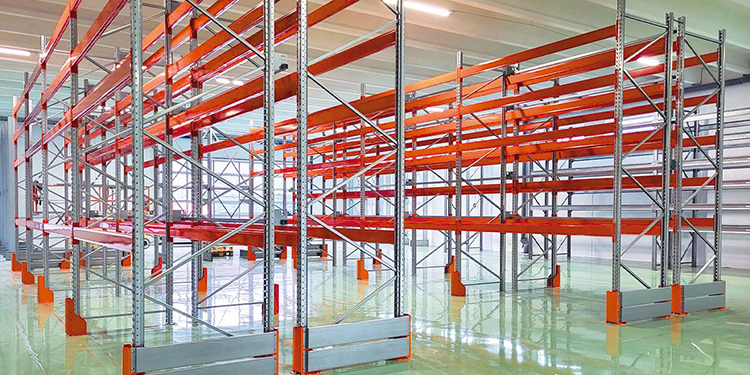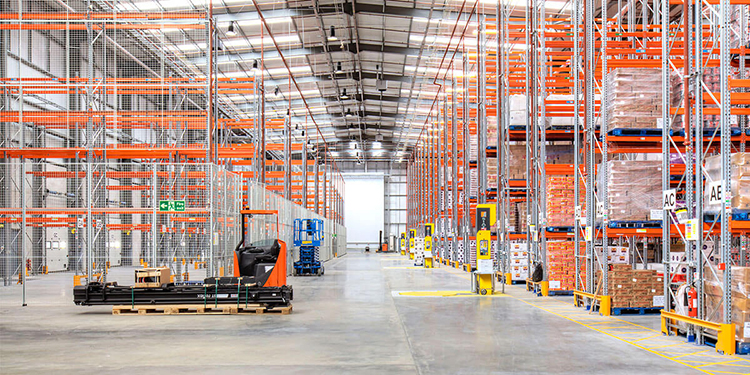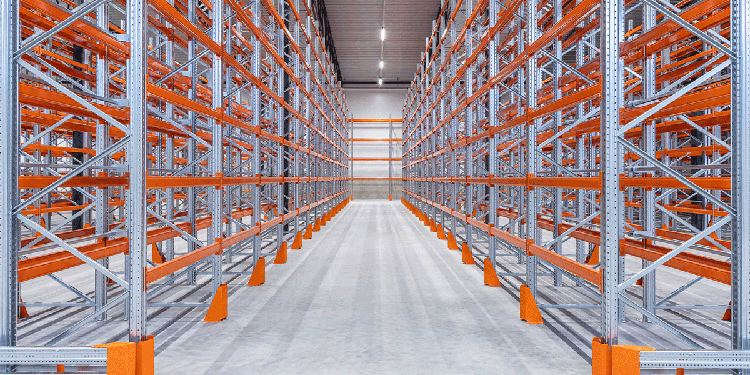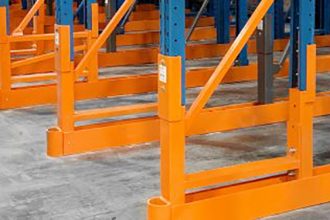Key Factors To Consider When Designing A Warehouse Rack Layout

Whether equipping a new distribution center (DC) or outfitting an expansion to an existing warehouse, it’s critical to get the pallet rack layout right before product is loaded into it. An incorrect layout might impede access to inventory or hinder productivity. When this happens, making changes post-commissioning can be costly. To avoid unnecessary downtime and expense, there are several key factors to consider when designing a warehouse rack layout.
“The earlier an operation starts planning a warehouse rack layout the better,” explained Pablo Montes, Managing Director of AR Racking. The company is a member of the Rack Manufacturers Institute (RMI). “Once the overall facility drawing is complete, it’s smart to work with an experienced rack expert. A rack manufacturer, distributor, or vendor can develop a plan to maximize available square footage. Any RMI member can offer guidance and recommendations at the outset of the project to ensure the optimal layout.”
When working with a rack manufacturer on a warehouse rack layout, an operation should consider several factors. Montes shared the following list.
Factor # 1: Process Flow
Frequently influenced by the facility’s design, the path inventory takes to enter and exit an operation has a significant impact on warehouse rack layout. The racks’ orientation and positioning should enhance the flow of inventory passing from one process to another. That is, from receiving to storage to forward pick zones to consolidation to shipping.
“The location of the inbound and outbound dock doors is important for a warehouse rack layout designer to know up front,” Montes said. “The sequence of operations required to fill orders or support production processes is also an important starting point for the layout configuration.”
Further, because inventory flows continuously into and out of warehouses, the frequency of stock keeping unit (SKU) turnover also affects warehouse rack layout. “It is not possible to determine a warehouse rack layout without knowing how often inventory enters and exits the rack in a given period,” added Montes. “Turnover frequency directly impacts the type of rack that will best accommodate the products.”

Factor # 2: Facility Characteristics
In addition to the location of shipping and receiving, several other facility characteristics can influence a warehouse rack layout. These include the building’s dimensions: both square footage and overall ceiling height. Taller buildings can potentially be outfitted with taller racking. This can help maximize the cubic storage density of the operation.
Other features that can affect the layout are building columns, entrances and exits, construction type, and facility site. The geographic location of the building will help the rack manufacturer determine site-specific details about seismicity and environmental risks, Montes noted.
“If a facility is in an area at a higher risk for earthquakes, high winds, or snow, the rack’s engineering and layout must reflect that,” he said. “Also, local building codes and fire safety requirements affect a warehouse rack layout and design.”
Factor # 3: Safety Stock
Remember the supply chain disruptions and subsequent inventory stock outs that occurred during COVID? Many operations do and are rethinking their “just-in-time” inventory management strategies. For many, it was historically too hard to cost justify storing additional extra inventory on a “just-in-case” basis. Often, safety stock represented only enough of the most popular products to cover a few days or weeks.
Today, however, fear of disappointing — and potentially losing — customers is driving more retailers and manufacturers to increase their safety stock volumes, noted Montes. “That means they need a place to store the extra products. The amount of safety stock an operation plans to hold is definitely a factor when planning a warehouse rack layout.”
Factor # 4: Product Characteristics
The characteristics of the stored loads also influences warehouse rack layout, Montes continued. “Are the items mostly heavy, light — or a mix of both? Will the facility be handling mostly pallet loads or breaking down pallet loads into individual cases or eaches?”
Answering those questions requires knowledge of the unit load dimensions. This includes length, width, height, and weight. Load shape — uniform or irregular — also impacts warehouse rack layout.
Additionally, products that have special storage or handling needs may require specialized rack layouts. “For example, food, beverage, or pharmaceuticals that need refrigeration or freezer storage may need a different warehouse rack layout than products stored in an ambient environment,” Montes explained. “Because it’s expensive to keep a storage space chilled, racks are often spaced as closely together as possible in temperature-controlled areas.”
Likewise, hazardous products may require a different warehouse rack layout compared to standard inventory, he added.

Factor # 5: Handling Equipment
The type of equipment used to load and unload the racking is another factor that affects a warehouse rack layout. Montes said that some operations have a specific type or brand of forklift in use. In these cases, the dimensions and specifications of the forklifts interfacing with the rack impact aisle width and beam heights.
“A standard counterbalanced forklift needs a certain amount of space to maneuver when placing or removing a load,” he noted. “Also, the maximum reach height of a forklift affects the number of levels of storage. The shorter the rack needs to be, the more rows of rack there will be to hold the inventory.”
Storage rack used with automation — such as an automated storage and retrieval system (AS/RS) or autonomous mobile robots (AMRs) — may also require specific layouts, Montes added.
“Conversely, sometimes the storage rack chosen will necessitate the use of a specific type of handling equipment,” he said.
Factor # 6: Worker Safety and Accessibility
Associate safety is another critical factor to consider when planning a warehouse rack layout. The layout should not obstruct access to exits, for example, said Montes.
“It’s also important to ensure that associates receive training on how to properly and safely interface with the rack,” he continued. “They should know the maximum load capacity of the racking as displayed on the plaques and other signage. Also, they should never climb into a rack, and never walk on wire decking.”
Learn More About Warehouse Rack Layouts
Have more warehouse rack layout questions? RMI offers the publication, “Considerations for the Planning and Use of Industrial Steel Storage Racks,” to help. Additionally, the members of RMI are available for consultations, insights, and recommendations. For more information, visit mhi.org/rmi.


